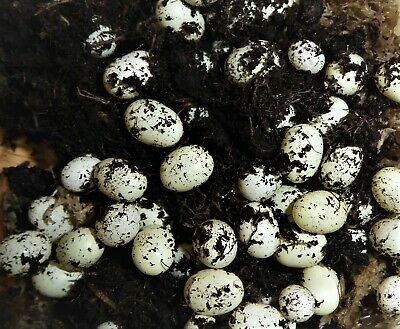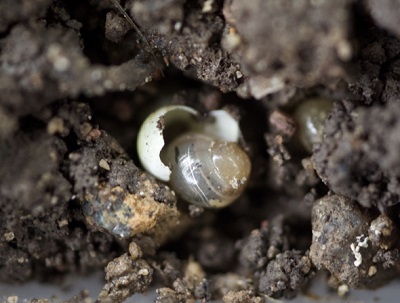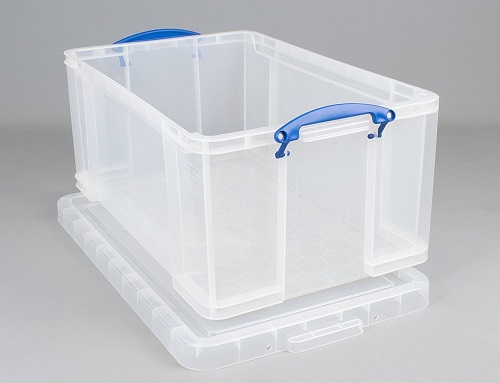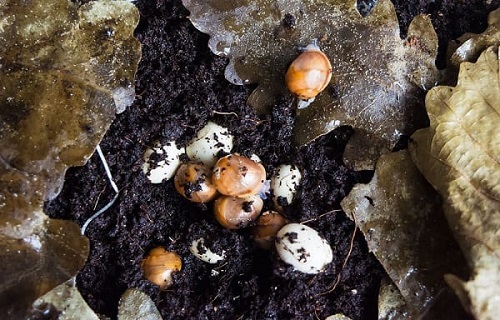How Snails are Born
Just like birds, snails are oviparous animals that reproduce through the laying of eggs that hatch to young snails. After 10 days of mating, spawning occurs which is simply when the “pregnant” snail lays the eggs inside the ground holes as the natural incubation chamber. After the eggs are laid, the holes are covered with soil.
The eggs of snails are small, pearly and spherical and are protected by a viscous substance on the egg shells. After about 14-40 days that the eggs are buried in the soil, the eggs would start hatching. Each hatched snail weighs 0.03mg on average.

The incubation period for snail eggs varies from species to species. Other things that influence the incubation period include soil temperature, humidity and soil pH.
The snail embryo inside the egg feeds on the albumin present in the egg and then tears the egg shell to get itself out. After hatching, the snail hatchlings remain inside the incubation chamber (soil) for some days for safety purposes and will continue to feed on the shell of their own egg shells which is very rich in calcium and other minerals. They later crawl out of the soil to the soil surface to begin their independent lives without the need for their parents.
Newborn snails take the form or shape of their parents but with their shells still soft. However, the shells harden and gradually as the hatchlings grow.
How many eggs does a snail lay?
A land snail can lay between 10 and 400 eggs in each clutch depending on snail species. For example:
- Achatina achatina species lays clutches of 30-300 eggs
- Achatina fulica species lay clutches of 10-400 eggs
- Archachatina marginata species lay clutches of 4-18 eggs
How to Hatch Snail Eggs
If you intend to hatch snail eggs by yourself, there are steps that you must follow. Snail eggs hatching involves the following:
- First and foremost, it is important to have an incubating chamber made with a transparent plastic storage box like the one below or a specialized hatchery or nursery pen. The size depends on the number of snail eggs you plan to hatch. Fill the plastic storage box or specialized hatchery pen floor with wet, sterilized soil with 10-20 cm depth. If you are using a plastic container and create small holes on the sides as vents or air pores.
- Check the snailery or breeders’ pen for new eggs laid in the soil. If there are eggs there, you must be very careful while collecting the snail eggs. It is recommended to use a plastic spoon to scoop up the eggs from the soil and put them in a clean plastic cup.
- On getting to the incubating chamber, dig up holes (about 2-5 inches or 5-10cm deep) in the soil using a shovel or hand trowel. The hole should be wide enough to accommodate 40-50 eggs evenly distributed. Use the plastic spoon to scoop the eggs from the plastic cup into the holes and cover them up with soil to about 2 inches (5cm). You can label each hole with the date and number of snail eggs buried for easy monitoring.
- It takes about 14-40 days after snail eggs are laid to hatch depending on the snail species. So after 14 days, some of the eggs should have started hatching. After 4-6 days, the hatched snails would start coming out to the soil surface.
- After 40 days, the hatchlings can be collected using a plastic spoon and moved to a nursery or growing pens where enough feed and water are available.


Note:
- The plastic box should be covered with pores for ventilation. It should also be placed under a cool shade with enough daylight.
- Feed the hatchlings with diets rich in calcium and crude protein.
- Avoid picking the eggs with your hands. Use plastic spoons for this purpose.
- Keep the soil wet always but avoid too much water in the soil as it would negatively affect the hatching rate.
- It is difficult to have a 100% hatchability rate as different snail species have different snail egg hatching rates. So don’t get sad if all the eggs didn’t hatch.
- Keep the whole pen or box ventilated and the soil temperature should be maintained at 23-30oC for high hatching success.
- You can watch the video below to a better explanation.







